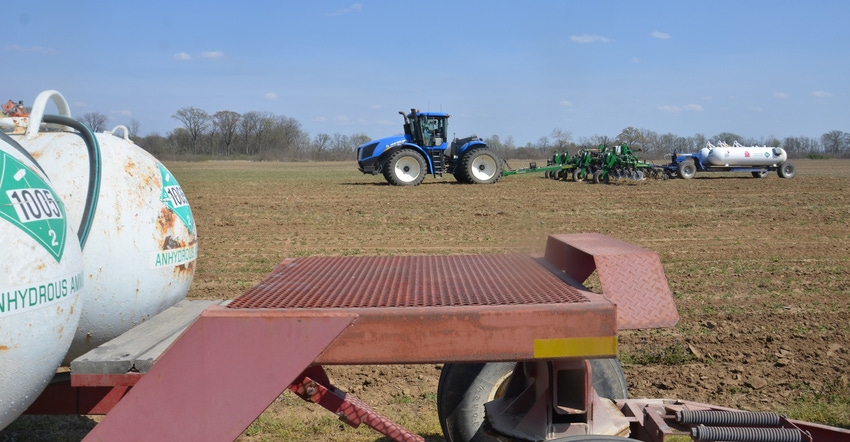January 25, 2022

With current high nitrogen prices and spring supply concerns, it is important to understand the role of N application method and source in limiting N losses and improving N use efficiency. Nitrogen for corn is part of a complex biological system that is dependent on the environment. It’s difficult to model and predict. It’s also still difficult to predict the weather; therefore, it’s still difficult to predict N losses and the amount of N released from the soil.
However, being inefficient with N fertilizer and applying “more than enough N to ensure maximum yield” is neither financially nor environmentally sustainable, especially with current fertilizer prices.
The placement and timing of N fertilizer is one way to reduce the risk of N loss and increase bushels produced per pound of N applied.
Up until the V6 growth stage or about 18 inches tall, corn only uses about 25 pounds per acre of N. Following V6, corn plants enter the rapid growth phase, and N uptake rapidly increases. If most N fertilizer was applied before this growth stage, it’s more prone to unpredictable environmental conditions. It’s more at risk to leaching, denitrification, volatilization and becoming unavailable for the plant.
Increasing efficiency
An in-season sidedress application of N may not always result in a yield increase, but it can consistently reduce potential for N loss and the amount of nitrogen needed to produce high yields as compared to fall or early-spring applications. In-season sidedress N applications also allow flexibility to adjust total N fertilizer rates based on early-season weather variations.
The use of a starter fertilizer application with N, in combination with an in-season sidedress N application, is an efficient method to apply just enough N to get the corn plant off to a good start, and then place most of the N immediately prior to peak plant uptake, minimizing the potential for N loss.
The source of N fertilizer applied is also an important factor for improving efficiency of N applications. Anhydrous ammonia takes the longest to convert to the nitrate form. The nitrate form is most susceptible to environmental losses caused by leaching and denitrification. Therefore, if fall and/or early-spring N applications are required, anhydrous is the least susceptible to result in N loss.
Minimizing N losses
If a fertilizer containing urea is used, such as granular urea or 28% UAN, these sources should be incorporated or injected into the soil to prevent N losses from volatilization. A urease inhibitor like NBPT can be used to prevent volatilization losses if N is surface-applied. However, these typically only buy you an additional seven to 10 days. It is also important to note that volatilization potential is increased when N is surface-applied in high-residue systems such as no-till and cover crops.
In addition to urease inhibitors, nitrification inhibitors like nitrapyrin can be used with anhydrous, urea and liquid N sources to limit potential N loss caused by nitrate leaching and denitrification by delaying the conversion of ammonium to nitrate.
Overall, choosing the right source and application timing of N fertilizer is important when improving nutrient use and cropping system efficiency. Nitrogen fertilizer that is lost is nitrogen that the plant can no longer use. It can become potentially harmful to the environment and has no financial benefit.
Quinn is a Purdue University Extension corn specialist.
You May Also Like




